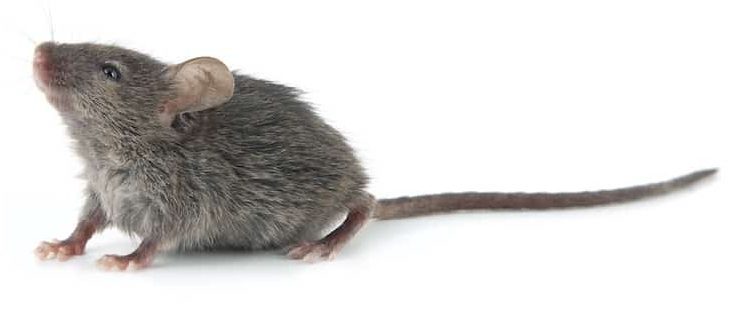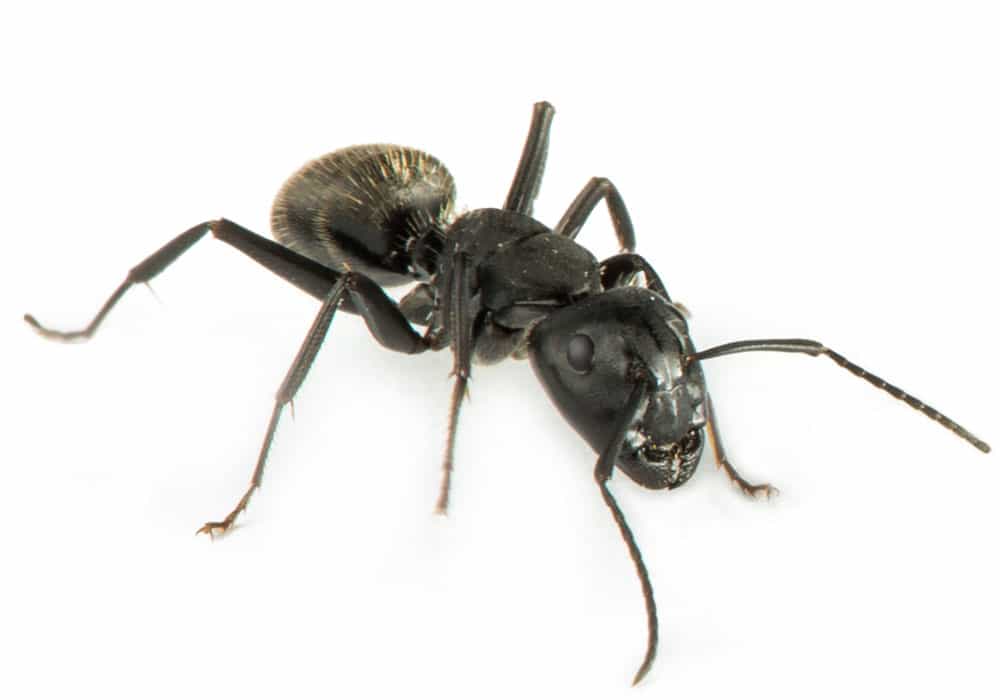The cooler months really bring out the beauty of Happy Valley. The pace of the bustling community does not slow down when the temperatures drop and the winter rain begins to fall. For instance, The Happy Valley Hikers, a casual group of Happy Valley residents who organize group walks in the area, have a full schedule of events and hikes on the docket for the winter months.
Although the cooler temperatures don’t deter the people of Happy Valley from spending time outdoors, the less comfortable weather does encourage one local pest to seek shelter indoors. Fall and winter is a common time of year for rodents to look for a warm environment with a food supply to wait out the winter. In this case, we’re talking about rats. Gross!
The best way to ensure that you don’t fall victim to a rat infestation in your home is understanding rat behavior. Knowledge of how and why rats enter a home, common signs of an infestation, and what you can do to prevent a rat problem in the first place are the best ways to make it through the rodent’s most active indoor season pest-free.
If you have a pest issue at your home or business, contact our Happy Valley pest control company for a Free Consultation.
Don’t rats hibernate during the winter?
Many people are under the impression that rats hibernate during the winter months, but this is a myth. Rats search for a warm, dry, and food-rich environment to wait out the winter months. Unfortunately, this environment often ends up being the nooks and crannies of our homes and businesses.
What kind of rats are present in Happy Valley?
There are two primary species of rats that inhabit the Happy Valley area. The Roof rat, sometimes called the “black rat” is dark in color and often found on roofs, as its name suggests. The Norway rat, often called the “gray rat” or the “sewer rat” are often found in basements, in small voids under outbuildings, or even in pipes. Of the two, the Norway rat is the more common species that professional exterminators encounter, however, homeowners and pest professionals are currently experiencing and increase in local roof rat populations.
The roof rat
The roof rat is an excellent climber. These rats tend to build their nest above ground and are often spotted on roofs, gutters, and inside attics. Often times the roof rat gains entry to a building by climbing trees, gutters, or electrical poles. Pest experts will often tell you that the roof rat is a hearty rodent and more difficult to get rid of than the Norway rat. While roof rats do prefer nesting above ground, they are sometimes observed nesting in burrows below ground.
The Norway rat
Norway rats are rounder and larger than most species of rats. Their tail is shorter than the full length of their body and they have small ears and eyes. Norway rats build nests and line these nests with soft materials. Norway rats are commonly found on the lower levels of buildings. It’s not uncommon to find norway rats nesting in crawl spaces, inside walls, garages, and under decks or sheds.
Backyard chickens lead to rat problems in Happy Valley
Although it’s absolutely possible to keep a rat-free chicken coop, sometimes even the tidiest coops can lead to the development of serious rat problems. Rats have a gestation period of just 21 days, so a small rat problem can quickly become a full blown infestation if not addressed early and effectively.
Guidelines for backyard chickens in Happpy Valley
The city of Happy Valley allows backyard chickens under strict guidelines. Residents may have up to 6 backyard chickens per dwelling. The chickens must be kept in rodent-proof coops, a minimum of 5 feet from all lot lines, and proper sanitation must be maintained at all times.
How can I tell if I have a rat problem in my chicken coop?
Sometimes you will know that you have rats in your coop because you will see the physical presence of rats. But often times the sneaky rodents do a fairly good job of living amongst us without being seen. Look for these signs in your coop to determine if you have a rat problem:
Other factors that can contribute to rat problems in Happy Valley
- Gnaw marks on the coop
- A musty type odor
- Holes/burrow marks around the base of the coop
- Rat runs or trails (commonly travelled paths)
- Cylinder shaped droppings (larger than mouse droppings)
- Sounds of scampering and rustling, especially at night
As local pest control experts in Happy Valley and the surrounding areas, we’re very knowledgeable in the factors that contribute to rat problems. Awareness of the following can help you to protect your property against rats:
- Bird seed scattered on the ground of the property or any nearby property
- Presence of garbage on site, or any nearby sites
- Unkept and overgrown bushes or other areas where rats can shelter
- Decks or sheds that have a void underneath
- Blackberry bushes can provide booth shelter and nourishment for rats
- Trees that are very close to a structure can act as a ladder
- Any opening that is the size of a quarter or larger is big enough for a rat to squeeze through. Look for gaps around windows in doors, cracks in foundation, vents or screens that are ripped or torn, voids around pipes, etc.
What signs indicate that rats are present?
Often times, when a rat problem is developing, the homeowner has not actually caught a glimpse of the rodents. Rats are not always seen, but they do leave a number of unique indicators that make their presence known.
Signs of a rat problem can include gnaw marks on walls and surfaces, oily spots on walls where the natural oils from rat fur has rubbed off, disturbed food packages, rat droppings, or the presence of rat nesting materials. Sometimes sounds at night, like fast scampering or other sounds of movement inside walls, attics, and basements can be the signs of a rat problem. There are a number signs that can indicate that rats are present.
Are rats dangerous?
Rats carry many serious diseases and viruses that can be dangerous to both humans and pets. The rodents can also do major structural damage. It’s very important to address rat control quickly as a small problem can quickly get out of hand.
Rats carry diseases both directly and indirectly. Disease can be spread directly through contact with rats, rat bites, rat scratches, contact with rat nests, and contact with rat urine or feces. The indirect spread of disease occurs when infected fleas, ticks, mites, and flies act as a third party to pass disease.
Salmonella
Salmonella lives in the digestive tracts of rats. Typically, Salmonella infection occurs when there is a rat problem in the kitchen. Rat urine and droppings on cooking surfaces contaminates food and drinking water.
Hantavirus Pulmonary Syndrome
Hantavirus is a severe and potentially fatal respiratory disease. The disease is passed from rats to humans through their saliva, droppings, and urine. The most common way for humans to get the disease is through breathing in air infected by the virus.
Important note: Rat droppings are a biohazard. Even very old rat droppings can carry disease. It is imperative to practice proper clean up to keep disease from spreading. It’s always best to contact a pest expert (exterminator) who has the tools and experience to take care of the problem safely.
Leptospirosis
Leptospirosis is a bacterial disease that affects both humans and animals. It is a difficult to diagnose disease as its symptoms often mirror those of other diseases. Leptospirosis can lead to inflammation around the brain and spinal column, kidney damage, respiratory failure, and in some cases even death.
Is DIY rat control a good idea?
It is possible to get a get a rat infestation under control with do-it-yourself methods. A strict and persistent process of baiting, trapping, complete removal of food sources, and sealing up entry points can work.
All DIY tactics involve the use of poison, direct contact with rats, and direct contact with infected materials such as rats nests and rat droppings. It’s imperative to follow safety precautions to a tee. Many homeowners choose to leave these jobs to the professionals because they do not want to risk safety or enter a rat infested crawl space to set bait.
If you are considering hiring out an exterminator to handle the treatment and rat removal processes, it’s recommended to allow the professional to handle the snap traps from the beginning. Rats are intelligent animals and learn quickly to avoid snap traps. More often than not, there is only one opportunity to trap a rat population and if done incorrectly, the rats will rapidly learn to avoid the traps in the future. This can make professional rat extermination an even more challenging process.
Who can I call for rat control in Happy Valley?
If you’re currently experiencing a rat problem at your home or business, you’re not alone! Rats are a common problem and a major concern for many Happy Valley residents.
Aspen Pest Control loves serving our Happy Valley community including family homes and businesses. We have successfully treated many homes in Happy Valley for rats.
We offer free, no pressure estimates and same day service for no extra charge. Our results are 100% guaranteed and we use products that are safe for your family and pets.
Contact us to discover why your neighbors in Happy Valley are loyal customers of Aspen Pest Control.








